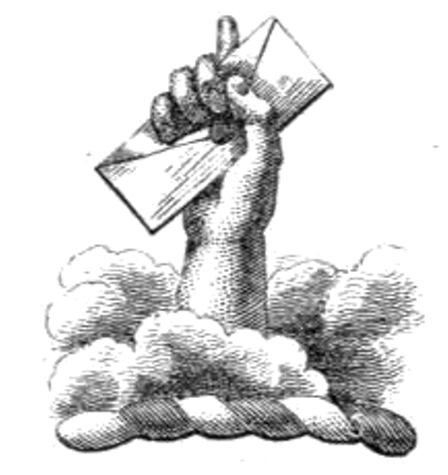
Strings Attached: Helen Haiman Joseph’s A Book of Marionettes (1920)
Anybody who grew up with Shari Lewis’ Lamb Chop, Fred Rogers’ King Friday XIII, or Jim Henson’s Muppets will surely feel that they have entered a more expansive puppet realm at the outset of Helen Haiman Joseph’s A Book of Marionettes (1920). Late one evening in Cleveland, Ohio as she makes alterations to their costumes, a cast of stringed characters from Anglo-Irish dramatist Lord Dunsany’s otherworldly drama The Golden Doom — the Chief Prophet of the Stars, the Chamberlain, a pair of Spies, and a Priest — treat Joseph as rudely and defiantly as Pinocchio abused Geppetto. Beating her retreat from this imagined Lilliputian assault, the weary marionette seamstress overhears them vainly reciting their august, cosmopolitan ancestry, from the ancient Indian Ramayana, Japanese jōruri dramas, and medieval Passion plays to pugilistic stars like Pulcinella, Punch, Kasperle and Karaghöz, on down to the devotion of modern immortals spanning from Shakespeare, Voltaire, and Goethe to George Bernard Shaw and Maurice Maeterlinck.
The first comprehensive history of marionette artistry in the English language, A Book of Marionettes appeared at a watershed moment in both American and world puppetry, after a century of artistic and technical innovation, and before the cinema’s global supplanting of human attention and storytelling. Drawing on her field study of European puppetry, Helen Haiman Joseph magisterially surveys the millennia-long world history of string and silhouette marionettes. Born seemingly simultaneously with organized religion, the little creatures never leave their creators’ sides, fully capable of expressing the entire range of human emotion and experience in every corner of the globe, in every age. Enlisted as surrogate actors, marionettes perform with their necessarily circumscribed mechanical gestures deeds of immense gravity, all while barely touching the earth. As Joseph moves adeptly through the ever-dynamic world of marionette theaters, one gets the feeling that she is actually narrating a kind of alternate history of the world, one that is altogether more joyously humane than any epic recounted about mere human beings.
Granted the power to subvert any worldly authority, marionettes, as Joseph proves, perennially overthrow all social, political, religious, and even artistic conventions. When Martin Luther’s Calvinist confrères refused to administer the sacrament to actors, they became puppeteers. On more than a few occasions, both puppeteers and puppets found themselves behind bars, so effective was their satire against oppressive ecclesiastics and governments. Since the modern Western state arose at a time when marionette theaters were ubiquitous, the diminutive legion was always at hand to model courage and stoutheartedness for their momentarily cowed audiences. That Shakespeare’s Julius Caesar, Christopher Marlowe’s Massacre of Paris, and Ben Jonson’s Every Man Out of His Humour were inspired by puppet plays, or that Lord Byron drew his model of Don Juan from a Punch & Judy piece titled The Libertine Destroyed, suggests the deep fraternity of modern drama with its little brother.
Helen Joseph’s experience as both a scholar and marionette artist gives us a panoramic view that encompasses: Drury Lane Theater petitioning in 1675 to prohibit Punch from the neighborhood, since he significantly reduced their box office receipts; enterprising eighteenth-century barber-dentists using marionettes to attract patients for tooth extraction; Erotikon Theatron’s 1862–63 caprices, which saw contemporary luminaries such as actors Sarah Bernhardt, statesman-philosopher Jules Simon, and dramatist Alfred de Musset animated as petite pupazzi by journalist Lemercier de Neuville, assisted by an extraordinary tribe of fellow marionette amateurs that included illustrator Gustave Doré, poet Théodore de Banville, and composer Georges Bizet. And while calling for American schools to teach national history through filiopietistic puppet plays, the author points to American puppetry’s hidden history of collaboration with blackface minstrelsy.
Given the robust portrait she paints of the early twentieth-century marionette theater, Joseph’s chapter “Plea for Polichinelle” seems puzzling at first glance, until she calls upon her beloved marionettes “as an antidote for the overdose of moving pictures from which an overwhelming number of us are unconsciously suffering atrophy of the imagination”. Though she sides with “Über-marionette” proponent Gordon Craig’s prediction that when some future archaeologist uncovers a film projector buried in ruins, “the Burattini will still be alive and kicking”, Joseph failed to foresee a more insidious foe: America’s propensity for social and artistic neoteny, which, aided by television, reduced its richly variegated marionette heritage of craggy indigenous folk caricature to a vaudevillian mob of puffy felt-and-Styrofoam juveniles.
Enjoyed this piece? We need your help to keep publishing.
The PDR is a non-profit project kept alive by reader donations – no ads, no paywalls, just the generosity of our community. It’s a really exciting model, but we need your help to keep it thriving. Visit our support page to become a Friend and receive our themed postcard packs. Or give a one-off donation. Already a supporter? A huge thank you for making all this possible.
Jun 12, 2025






